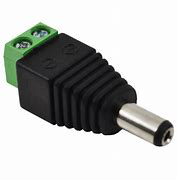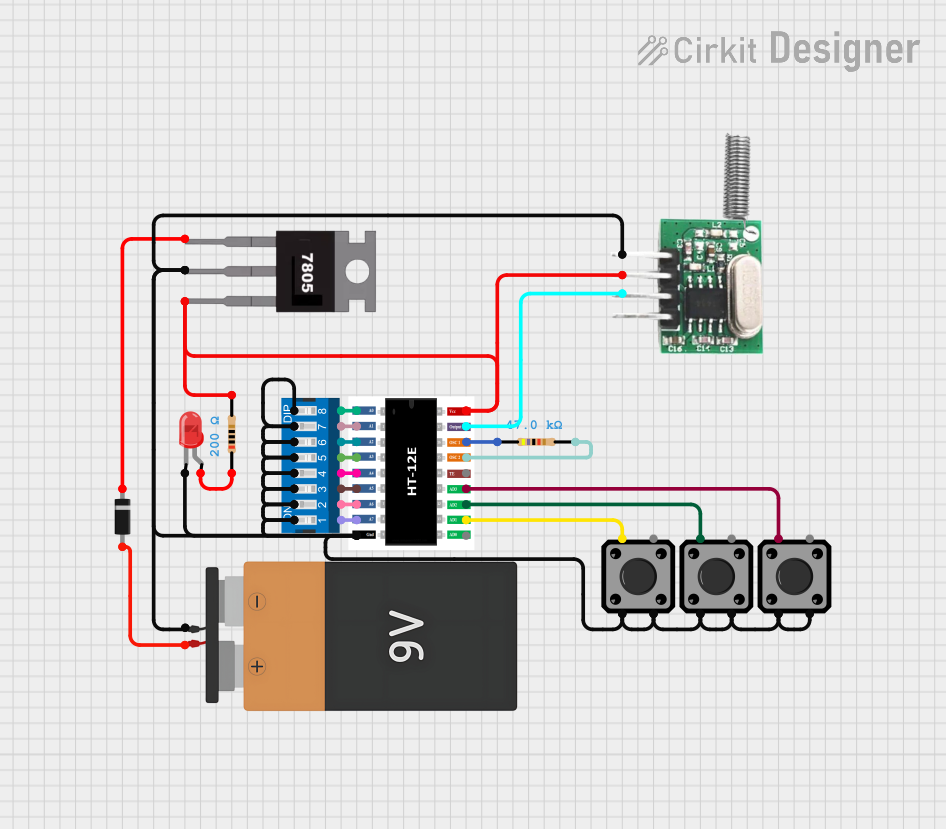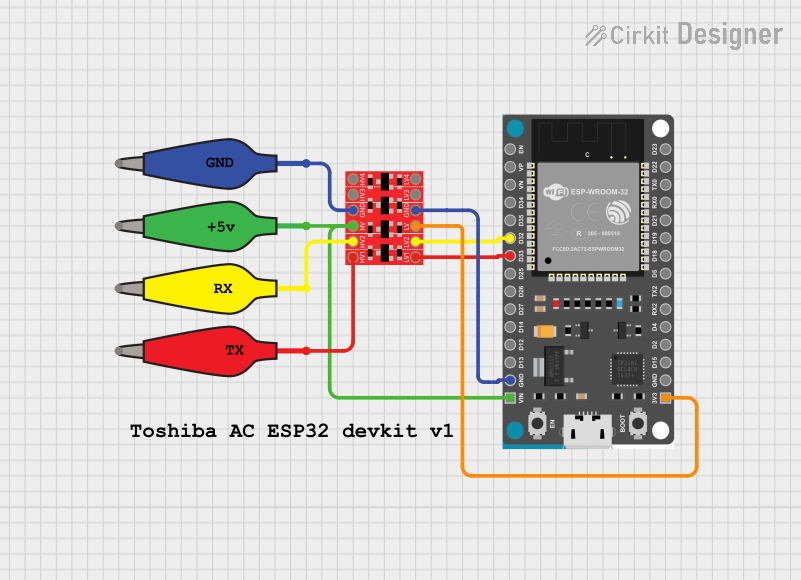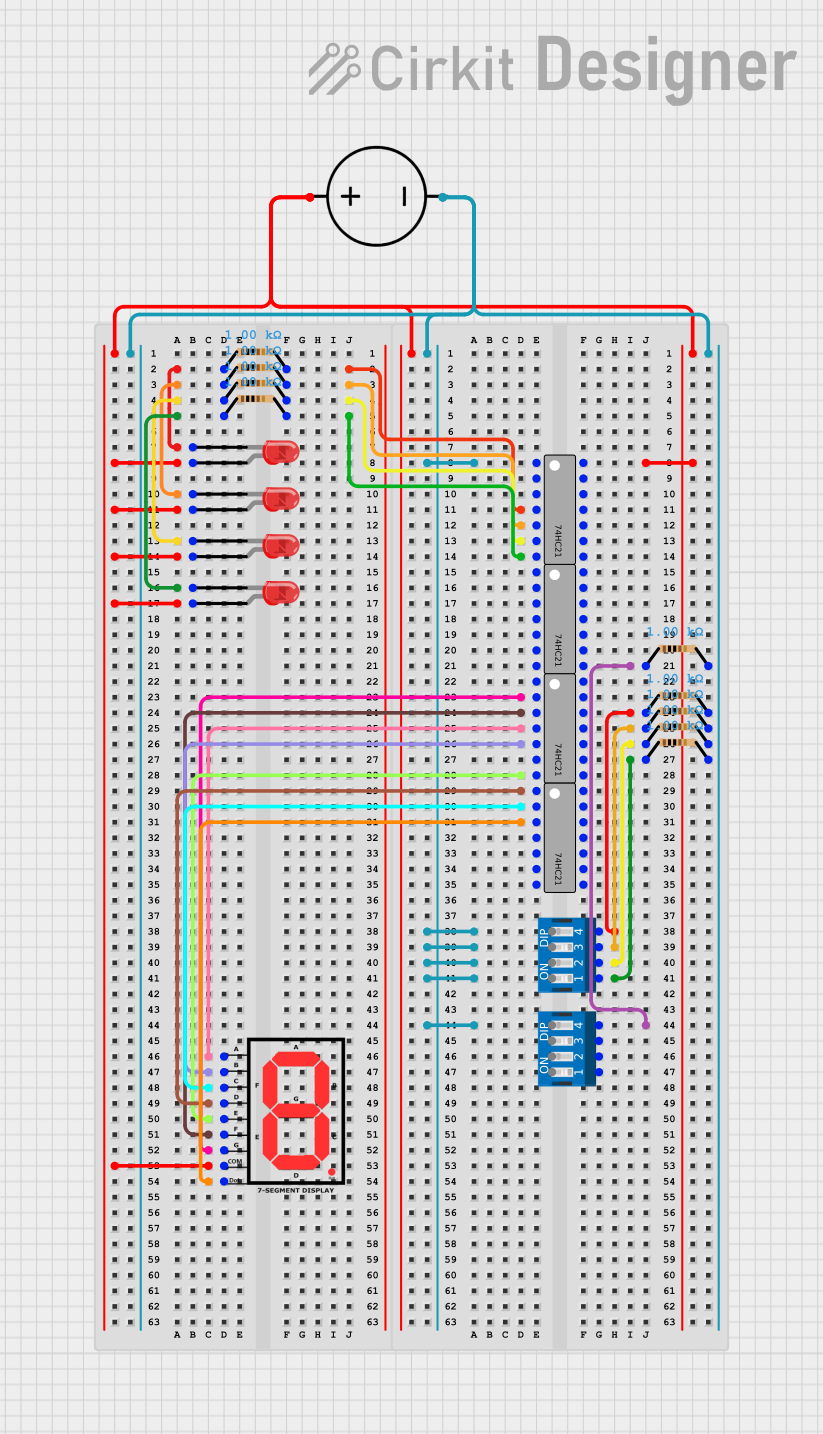
How to Use DC PIN : Examples, Pinouts, and Specs

 Design with DC PIN in Cirkit Designer
Design with DC PIN in Cirkit DesignerIntroduction
A DC Power Jack, often referred to as a DC pin, is a common electrical connector used to supply direct current (DC) power to a device or circuit. It is designed to receive a matching DC plug from an external power supply. DC power jacks are widely used in portable electronic devices, such as laptops, cameras, and small appliances, where a connection to a power source is necessary for charging or direct operation.
Explore Projects Built with DC PIN

 Open Project in Cirkit Designer
Open Project in Cirkit Designer
 Open Project in Cirkit Designer
Open Project in Cirkit Designer
 Open Project in Cirkit Designer
Open Project in Cirkit Designer
 Open Project in Cirkit Designer
Open Project in Cirkit DesignerExplore Projects Built with DC PIN

 Open Project in Cirkit Designer
Open Project in Cirkit Designer
 Open Project in Cirkit Designer
Open Project in Cirkit Designer
 Open Project in Cirkit Designer
Open Project in Cirkit Designer
 Open Project in Cirkit Designer
Open Project in Cirkit DesignerCommon Applications and Use Cases
- Power supply input for portable electronics
- Charging ports for battery-operated devices
- External power source connections for small appliances
- DIY electronics projects requiring external power
Technical Specifications
Key Technical Details
- Rated Voltage: The maximum voltage the DC pin can handle, typically ranging from 5V to 24V.
- Rated Current: The maximum current the DC pin can conduct, often between 1A to 5A.
- Contact Resistance: The electrical resistance between the plug and the jack, usually below 0.03 ohms.
- Insulation Resistance: The electrical resistance between the conducting parts and the outer casing, typically above 100M ohms.
- Durability: The number of insertion and removal cycles the jack can withstand without failure, often rated at 5,000 to 10,000 cycles.
Pin Configuration and Descriptions
| Pin Number | Description | Notes |
|---|---|---|
| 1 | Center Positive | Connected to the positive voltage |
| 2 | Outer Negative | Connected to ground |
Usage Instructions
How to Use the Component in a Circuit
- Identify the Polarity: Ensure the polarity of the DC power jack matches that of the power supply. The center pin is typically positive, while the outer sleeve is negative.
- Mounting: Secure the DC power jack to your device or circuit board. Some jacks are designed for PCB mounting, while others may require a panel mount.
- Soldering: Solder the connections to the appropriate points on your circuit. Use a soldering iron with an appropriate temperature setting to avoid damaging the component.
- Connection: Connect the external power supply's DC plug to the jack. Ensure a snug fit to maintain a good electrical connection.
Important Considerations and Best Practices
- Voltage and Current Ratings: Do not exceed the voltage and current ratings of the DC power jack to avoid damage.
- Polarity: Incorrect polarity can damage the connected device. Always double-check the polarity before powering up.
- Mechanical Stress: Avoid excessive force when inserting or removing the plug to prevent mechanical damage.
- Heat Management: Ensure proper heat dissipation when soldering and during operation to prevent overheating.
Troubleshooting and FAQs
Common Issues Users Might Face
- Loose Connections: If the device intermittently loses power, check for a loose plug or solder joint.
- No Power: Ensure the power supply is working and the polarity is correct. Check for any visible damage to the jack or plug.
- Overheating: If the jack overheats, it may be due to excessive current. Verify that the current draw is within the specified limits.
Solutions and Tips for Troubleshooting
- Resoldering: If connections are loose, resolder them ensuring good contact.
- Polarity Check: Use a multimeter to verify the polarity of the power supply and the jack.
- Replacement: If the jack is damaged, replace it with a new one that matches the technical specifications.
FAQs
Q: Can I use a DC power jack with an AC power source? A: No, DC power jacks are designed for DC power only. Using an AC power source can damage the component and the connected device.
Q: How do I know if the DC power jack is center positive or center negative? A: The symbol near the jack usually indicates the polarity. A plus sign (+) near the center pin indicates center positive. Always refer to the device's documentation for confirmation.
Q: What should I do if the DC power jack feels loose? A: Check the solder joints and the mechanical mounting. If necessary, resolder or tighten the mounting to ensure stability.
Example Code for Arduino UNO Connection
// Example code to demonstrate how to power an Arduino UNO using a DC power jack
void setup() {
// Initialize digital pin LED_BUILTIN as an output.
pinMode(LED_BUILTIN, OUTPUT);
}
void loop() {
// Turn the LED on (HIGH is the voltage level)
digitalWrite(LED_BUILTIN, HIGH);
// Wait for a second
delay(1000);
// Turn the LED off by making the voltage LOW
digitalWrite(LED_BUILTIN, LOW);
// Wait for a second
delay(1000);
}
// Note: This code assumes that the Arduino UNO is powered through its DC power jack
// with a suitable power supply that matches the Arduino's voltage and current requirements.
Remember to ensure that the power supply connected to the Arduino's DC power jack meets the board's requirements (7-12V input voltage recommended, with sufficient current capacity).